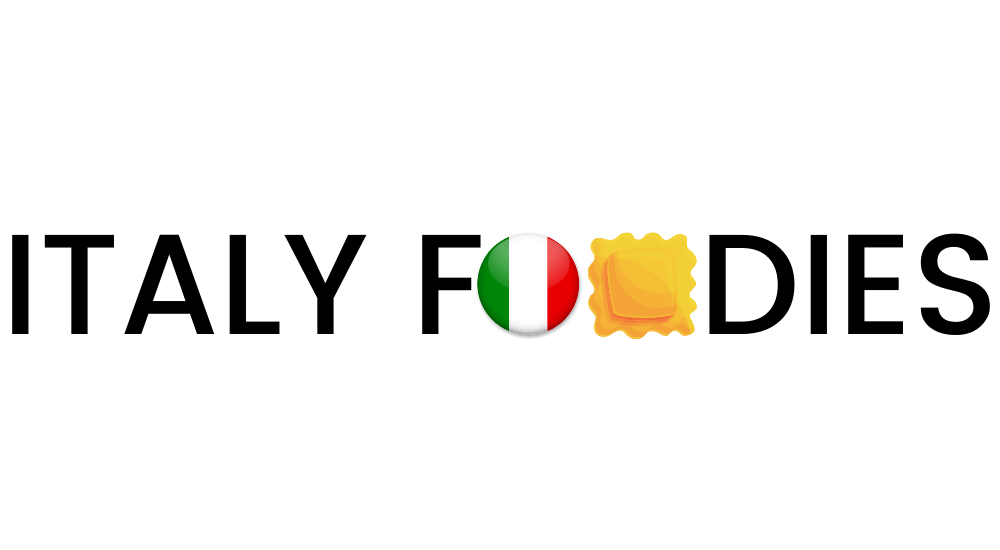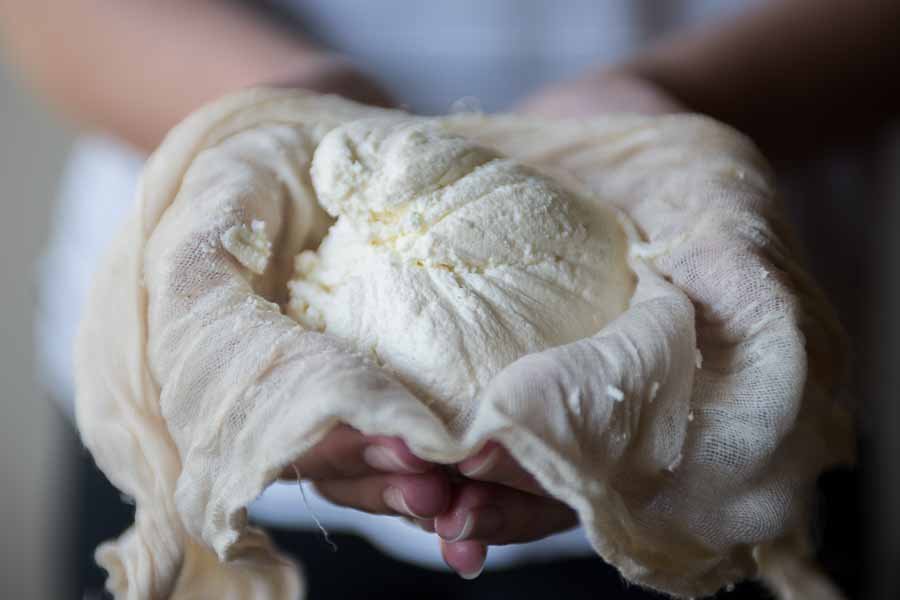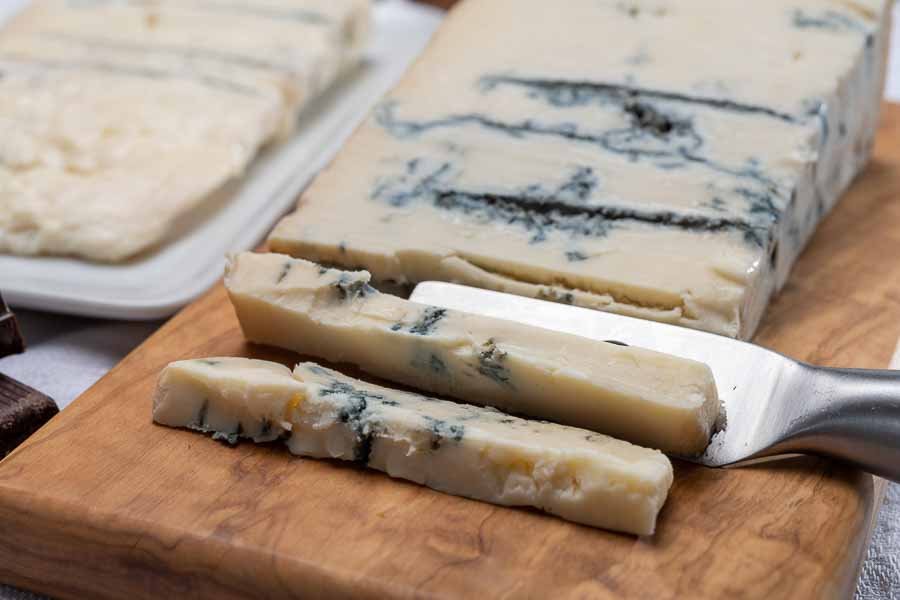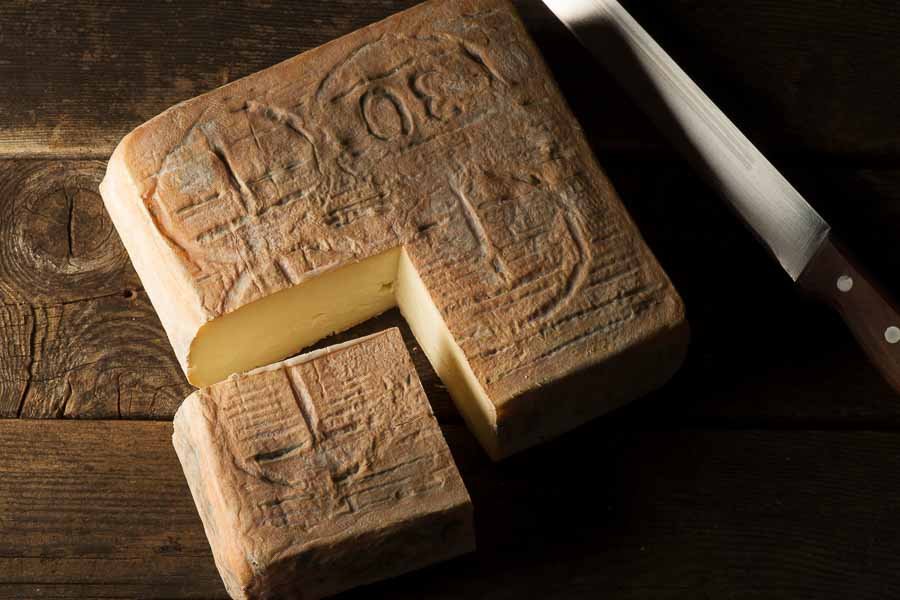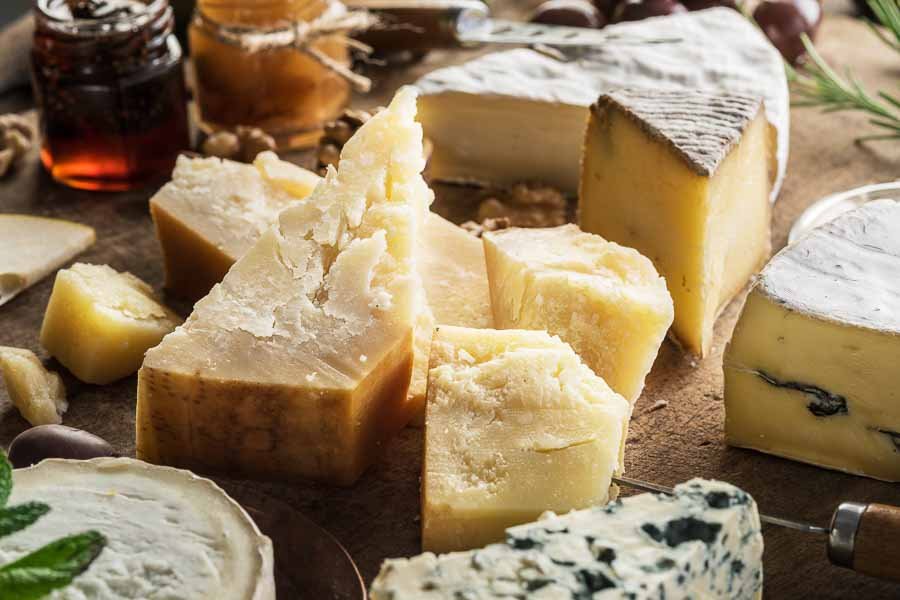12 Popular Italian Cheese Types Every Italy Foodie Should Try
Everyone knows the classic Italian cheeses like mozzarella and parmesan that are ever-present in some of the best regional Italian cuisine.
But did you know that there are actually more than 400 types of Italian cheeses that most people have never heard of?
In fact, almost every wine region and food city in Italy produces its own unique variety of cheese, and some have been producing cheese since as far back as the 5th century!
So who’s to say what the best Italian cheeses might be. Sounds like an impossible task.
But the popular Italian cheeses? Well, that’s up to us foodies to decide.
There are 12 unique varieties on this Italian cheeses list for your foodie bucket list and we hope you find a few new favorites.
Because, after all, what's an Italian feast without cheese?
Italian for Cheese
Say cheese! Well that’s just it — how do you actually say cheese in Italian? There are actually two different words that are Italian for cheese, both of Latin origins: formaggio and cacio.
Formaggio derives from the Latin word forma, which means shape or mold, because cheeses were put into molds or made into various shapes. They still are: wheels, logs, pyramids, rounds, and other shapes.
You’ll hear formaggio used more in northern Italy, and cacio used more in central and southern Italy, as in Cacio e Pepe (the famous Roman dish of spaghetti with cheese and pepper), and caciocavallo, literally 'cheese on horseback', from the way duos of gourd-shaped rounds are rope-bound and slung over a wooden board to drain and age.
Most Popular Italian Cheeses
The most popular Italian cheeses include mozzarella, parmigiano reggiano, gorgonzola and ricotta. Some of these cheeses work best slathered on crusty Italian bread as appetizers, while others are integral parts of main courses, pasta toppers, or even desserts!
However, you shouldn't expect your journey into the world of artisanal cheeses to end with this short list of mainstays.
There are so many types of cheese in Italy and ways of eating them that it's nearly impossible to narrow them down to just a few bests, but we’re sure going to try.
You’ll even find food festivals somewhere in Italy that celebrate your regional cheese.
And remember, when it comes to cheese, it's all up to what tastes good to you so don't shy away from experimenting.
Read on to know which cheeses you can't miss when you visit Italy, all categorized according to their textures, places of origin and ultimate use.
Types of Italian Cheeses
Soft Italian cheeses
If you like soft and creamy cheeses, Italy has much to offer. Sure, there are soft Italian cheeses like Mascarpone and Mozzarella that have become household names over the years, but there’s more to Italian cheese than just that.
1. Burrata
Made from: Stracciatella, Mozzarella, Cream
Burrata is a soft, white, and creamy Italian cheese of the Campania region. It was first made in the Murgia territory in the 1950s to minimize food waste.
Prepared using cow’s milk, it consists of an outer mozzarella skin and an inner creamy curd filling. It is best known for its characteristic lush texture that is similar to butter, or fresh cream.
Burrata is great eaten just as it is, but also tastes amazing when served atop bruschetta or with a Caprese salad.
2. Mozzarella
Made from: Milk from Buffalo (traditionally) and Cows
Mozzarella from Campania is perhaps the most popular of all the Italian cheeses. In fact, it's likely it would give most of the other cheeses on this list a run for their money when it comes to global popularity!
The traditional way to make mozzarella has always been to use buffalo milk, but today some people also make mozzarella using cow’s milk. This is called Mozzarella fior di latte.
The former, Mozzarella di bufala, is naturally creamier and lighter, and as some people would say it, the right way to do things.
Round, white and stringy, this cheese is favored by many due to its delicate taste and unique texture.
Like Burrata, fresh mozzarella is also known to ooze a bit of liquid when sliced. In its natural state, mozzarella makes for a great appetizer on its own, and it is often served with extra virgin olive oil or in salads.
It’s also popular in baked items such as the melanzane alla parmigiana, and of course, pizza!
3. Mascarpone
Made from: Cream
A list of Italian cheeses would simply be incomplete without mentioning mascarpone!
Many would liken this famous cheese of Italy from Lombardy more to a cream than to a cheese, but it is similar to burrata in that it's also made from cow’s milk.
Its creaminess makes it perfect for spreading onto anything, from toast to crackers. However, what it’s most popularly used for is making Italian desserts like tiramisu.
There are two main theories on how this dense, rich cheese got its name. The first theory is that the word “mascherpa” refers to milk cream.
The other theory is that this cheese enchanted a Spanish nobleman so much, he exclaimed “Mas Que Bueno!” which means “more than good!”
Whatever its origin, one can't deny that this cheese has captured the hearts of many.
4. Stracciatella
Made from: Mozzarella curds and cream
Curdy, liquidy, and wonderfully creamy in texture, stracciatella is what goes into the rich interior of a classic burrata. It is made by shredding fresh mozzarella into strings and then mixing it with cream.
This soft Italian cheese comes from the Apulia region of Southern Italy.
What makes this cheese so unique is its texture and spreadability. Scoop some into a bowl and drizzle some olive oil, salt, and pepper for a delectable appetizer.
It's also delicious spooned on top of some freshly baked pizza, pasta or even bread.
5. Ricotta
Made from: Milk from Cows, Buffalo, Sheep or Goats
From Sicilian cuisine comes one of Italy's most beloved dairy products, ricotta, a delightfully crumbly cheese with a rich and creamy flavor.
While technically not so much a cheese as it is a dairy by-product made from whey, sheep's milk ricotta is often found to be an essential ingredient in many Italian dessert recipes.
It is utilized by beating and mixing it in with other condiments like cinnamon or cocoa.
Note that while ricotta was traditionally made using sheep and goat milk, the kind that is sold in stores today is more likely to be made from cow or buffalo milk.
Semi-soft Italian cheeses
Smooth, yet gritty and hard, with a lot of character; that’s what describes semi-soft Italian cheese the best. From Gorgonzola to Taleggio, we'll take you through everything you need to know.
6. Gorgonzola
Made from: Cow’s Milk
From the city of Gorgonzola in Lombardy, one of Italy’s most prolific wine regions hails this iconic blue cheese that has now become an international favorite.
Because it's a bit runny at ordinary temperatures, it makes a great, and sometimes even essential, pizza topping.
Gorgonzola is quite diverse, and you can’t pin it down to one kind of taste since there are sweet and spicy versions.
The spicy variety of Gorgonzola (Piccante) smells distinctly of porcini mushrooms and herbs. The sweeter variety, on the other hand, has a more delicate flavor profile.
7. Fontina
Made from: Cow’s Milk
The Aosta Valley, to which the fontina cheese originally belongs, is a “Denominazione di Origine Protetta” which means it is a protected designation of origin.
Fontina is made from cow’s milk that is obtained from a single milking. Salt and water are added to this milk and then semi-cooked until the cheese becomes sweet and elastic.
This cheese is then aged for up to 3 months in order to make it ready for consumption.
Fontina is excellent for eating all on its own, but you can also add it to steaks, soups, and salads for some extra oomph.
It melts well too, making it great for something simple like a grilled cheese sandwich as well!
8. Taleggio
Made from: Cow’s Milk
Taleggio is a delicious Italian cheese from Northern Italy, specifically from the famous region of Lombardy. It’s a strong-smelling cheese made from cow’s milk that tastes mild and has a soft crust.
Taleggio is a great melting cheese. It works well with pizzas, polenta, and risottos, but you'll be surprised at how well it goes with pumpkin and mushroom dishes as well.
9. Scamorza
Made from: Cow’s Milk
Scamorza is a southern Italian cheese made with cow's milk. It is a stretched-curd cheese, where fresh curd matures in its own whey (no pun intended) for several hours to develop more acidity.
You can often tell it’s scamorza cheese just by the shape of it — like two connected balls, one smaller than the other, made by the string that holds it and allows it to ripen for a few weeks.
That’s actually where the cheese gets its name — scamorza means beheaded!
Often compared to mozzarella, Scamorza is sweeter and creamier than mozzarella, and less wet, which makes it ideal for baking as it melts well without being too runny.
Scamorza also holds up to smoking as well, known as scamorza affumicata.
Hard Italian cheeses
While hard and sharp cheeses tend to be a little saltier than most others, they’re often really great for grating over foods and are excellent sources of nutrition and flavor. Some of our very favorites are the ones listed below.
10. Pecorino
Made from: Sheep’s milk
If you like tangy, nutty, and savory flavors, this sheep’s (pecora) milk cheese famous in Tuscany is the one for you. The flavor of this Italian cheese type is directly related to how long it’s aged, and it comes in a ton of varieties based on the region where it is produced.
You might have even already heard of a couple popular varieties yourself, like Pecorino Romano and Pecorino Sardo.
11. Parmesan (Parmiggiano Reggiano)
Made from: Whole and skimmed Cow’s milk
Often referred to as Parmesan, this iconic cheese dates all the way back to the 13th century, and is mentioned more often in literature than any other cheese in the world. How’s that for an important wheel of formaggio!
Its proper name is Parmigiano Reggiano because it is made in Modena and the regions of Parma and Reggio Emilia. And of course, because this is the King of Cheese, you really should address it as such, out of respect.
Parmigiano Reggiano is made by curdling unpasteurized cow’s milk with rennet and salt, draining off most of the liquid, and aging it for at least a year.
Over time, the cheese dries out and attains a sort of crumbly texture and a salty, umami taste.
One of the things that makes Parmigiano Reggiano so unique is the almost completely natural way that it is produced, even today.
12. Grana Padano
Made from: Skimmed Cow’s milk
While Grana Padano looks very similar to Parmesan and has pretty much the same texture, what sets it apart is that it requires a shorter aging period. This makes it milder in flavor, as well as significantly easier and cheaper to produce.
The other great thing about this cheese is that it can be produced throughout the year using skimmed cow’s milk, with the result and quality only depending on the seasons in which it is made. It is great for use in any dish that uses Parmesan.
Sharp Italian Cheeses
If you love sharp cheeses that pack a punch, try gorgonzola piccante, provolone, or other aged firm cheeses.
Their strong flavors are due to the bacteria used in their production process, and make them great for sampling on their own or adding a certain tang to particular dishes.
Remember that a slice of good, sharp cheese is not supposed to be overly sour, but rather offer a full and concentrated flavor.
Creamy Italian cheeses
The creaminess of a particular cheese usually depends on the type of milk that is used to make it. Cheese that is made from sheep or goat milk, for instance, contains more fat than cheese that is made from cow’s milk, making it more rich and creamy.
Most of the soft cheeses mentioned in this list are naturally creamy.
Italian Cheese Types by Region
Northern Italian Cheeses
The regions of Lombardia, Trentino Alto Adige, Piedmont, and Valle d’ Aosta (Aosta valley) in Northern Italy are all renowned for making hearty alpine cheeses.
A couple of examples are Fontina, which is a delicacy of the Aosta valley; and Taleggio, which is produced in the Val Taleggio region of Lombardy. Gorgonzola is the famous bleu made in both Lombardy and Piedmont.
Parmigiano Reggiano is another popular cheese that comes from the North-central part of Italy, namely the Emilia-Romagna region. The name “Parmigiano Reggiano,” is derived from the two provinces that produce it, Parma and Modena, and is trademarked.
What this means is that a cheese can only be called by this name if it has been crafted in the region of Emilia Romagna.
This same region is also home to another village by the name of Sogliano al Rubicone that is famous for making the delicious Formaggio di Fossa, a variety of Pecorino cheese that is made from equal parts of cow and sheep milk.
Italian Cheeses in Central Italy
In addition to Emilia Romagna, the regions of Tuscany, Umbria, Abruzzo, Marche and Lazio in Central Italy also produce their own noteworthy cheeses.
Sardinia, Lazio and Tuscany are quite famous for Pecorino cheese, specifically Pecorino Sardo, Pecorino Toscano and Pecorino Romano. Abruzzo and Campania are particularly famous for different types of Caciocavallo cheese, especially Caciocavallo Podolico and Provolone.
Southern Italian Cheeses
Southern Italy is known for making the tastiest Mozzarella cheese. Perhaps the most famous is the bufala mozzarella found in Naples that’s made from water buffalo milk.
When it comes to Burrata cheese, the best can often be found in Puglia.
You'll also find great ricotta cheese throughout southern Italy and in Sicily, so you'll want to visit all three when you're there.
Best Cheeses in Italy for Pasta
When you are cooking pasta, you can either incorporate cheese into the dish by making a creamy sauce or by grating some over it to elevate the flavors.
And let’s just get this out of the way — a good pasta is rarely complete without a good scraping of Parmigiano Reggiano!
Parmesan, being a hard cheese, is great to use in whatever quantity you wish. Grate a little or a lot over a steaming bowl of pasta and enjoy.
Pecorino can also be used in a similar way, but just keep in mind that its taste is significantly sharper than parmesan.
With its whey-y, creamy and thick texture, Ricotta is a close second favorite when it comes to pasta dishes. You’ll often find it added to lasagna or any pasta that combines spinach and tomatoes. It also makes for a great filling for ravioli and manicotti.
But don’t overlook tossing a bit on the side of any pasta dish.
Gorgonzola is another flavorful cheese you can melt onto short pasta, like penne, but note that it won’t work the same way with longer kinds of pasta, like spaghetti.
Try melting it first and cutting it with another melty cheese like mozzarella. Look for the traditional pasta dish Gorgonzola with gnocchi and walnuts in Lombardy — filling yes, but oh-so-tasty!
Best Italian Cheese Types for Aperitivo
The word aperitivo refers to the Italian happy hour, though it started out as an actual drink enjoyed by Italians before dinner to cleanse the palate.
What began as a Northern Italian tradition in the 1700s has since spread to other regions in Italy as a cultural tradition that starts every day around 5 o’clock, like the afternoon cicchetti in Venice.
The tradition has even spread to other countries around the world!
Italians snack on a charcuterie board while drinking their aperitivo, and it typically includes chunks of Grana Padano and Parmigiano Reggiano drizzled with a bit of balsamico di Modena, cold cuts, nuts, and seasonal fruit.
Where to Find the Best Cheese in Italy
Most people have their own personal favorites from the many different types of Italian cheeses, but there is no universal best. To find out for yourself what you like and enjoy the most, try a wide variety of cheeses, in a variety of different ways during your trip to Italy.
Cheese boards, and pastas, pizzas and salads - try them all! Just remember that it is ideal to taste a new cheese for the first time at a location that is well known for producing it.
This ensures you develop a palate based on authentic flavors, which in turn makes it easier to decide what you love the most!
***
If you’re a cheese lover in Italy, you’ll be eating more cheese than you can imagine — a different type of Italian cheese for every day of your trip! Mangia and enjoy!
